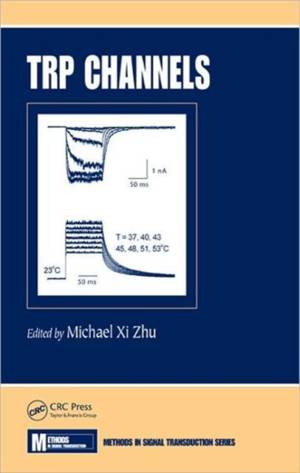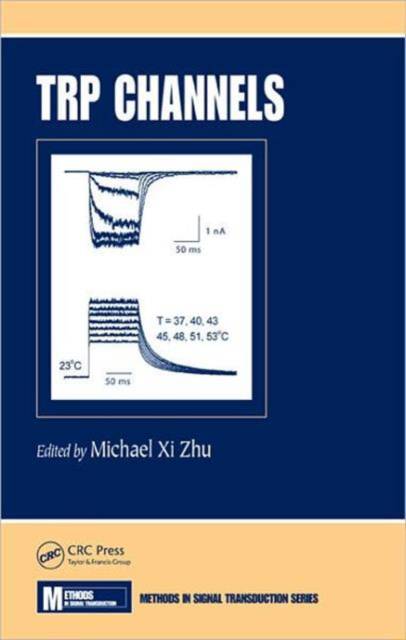
- Retrait gratuit dans votre magasin Club
- 7.000.000 titres dans notre catalogue
- Payer en toute sécurité
- Toujours un magasin près de chez vous
- Retrait gratuit dans votre magasin Club
- 7.000.000 titres dans notre catalogue
- Payer en toute sécurité
- Toujours un magasin près de chez vous
Description
The rapid expansion of the TRP field has generated a large amount of excellent original work across many different research fields. However, investigators are not necessarily familiar with the pros and cons of the variety of methods used to study TRP channels. Because of functional and genetic diversity, as well as the different physiological roles they play, techniques used for studying TRP channels range from single molecular analysis to behavioral animal studies. Methods in multiple areas, such as molecular biology, fluorescence imaging, electrophysiology, cell biology, genetics, proteomics, pharmacology, system physiology, and behavioral assessment, are employed to investigate various aspects of these channels. Choosing among many possible topics in these broad areas was a daunting task.
A comprehensive review of the field, TRP Channels spans the information gap by providing broad coverage of current methods and techniques commonly used in TRP channel research, and detailed protocols with thorough discussions of the advantages and disadvantages across methods. Some topics covered include
- Mammalian, Drosophila and C. elegans TRP channels
- Practical protocols for functional studies of TRP channels, including TRPC, TRPV, TRPA, TRPM and the intracellularly localized TRPML channels
- ThermoTRPs, including the new fast temperature jump apparatus and the high throughput random mutagenesis method for screening critical motifs involved in TRP channel regulation
- Cell-based high-throughput screening assays for TRP channels and their applications in drug discoveries
- TRP channel functions in native cells, including smooth muscles, neurons, and cancers
Showcasing the current status of the field, TRP Channels covers the major techniques used in various areas of research. The majority of the chapters are protocol oriented, with the goal of providing clear directions for laboratory use. Because of the breadth of the TRP field, the applications of some methods are described in multiple chapters by experts working on a variety of channel types that serve different physiological functions, highlighting distinctive views on how the methodology can be utilized. Some chapters include discussion on the usefulness and pitfalls associated with the use of certain techniques. Together with chapters that offer comprehensive reviews on the functional regulation and other roles of TRP channels, students and investigators new to the field should find this book particularly informative.
Spécifications
Parties prenantes
- Editeur:
Contenu
- Nombre de pages :
- 500
- Langue:
- Anglais
- Collection :
Caractéristiques
- EAN:
- 9781439818602
- Date de parution :
- 14-04-11
- Format:
- Livre relié
- Format numérique:
- Genaaid
- Dimensions :
- 157 mm x 234 mm
- Poids :
- 657 g






